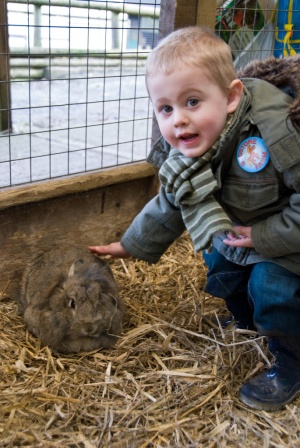
Keeping pets in the classroom requires a commitment from you, the teacher. This article can apply to parents as well who are interested in bringing a pet into the home. You assume the role of responsible caretaker in your attitude and behavior towards the animal(s). You should be prepared to care for all the pet’s needs. You must teach your students how and why animals must be treated humanely. The lives of these animals are in your hands and you must be sure that students don’t overhandle or mistreat them.
A pet in the classroom can be a very positive teaching tool for your students. If you take on the responsibility of ownership and care, your students learn that having a pet is full-time commitment. This means when school is not in session, you take the pet home to care for it. During school vacations and recesses such as weekends, holidays and summers, heat, lights, air-conditioning are usually turned off. This poses a danger to a pet who may become ill or even die. You should be prepared to take the pet home with you on these occasions.
Some teachers send a pet home with a student. But this is not always a fair solution. Is the student knowledgeable enough and prepared to care for the pet? Do the student’s parents agree? Do you want to teach only part-time responsibility?
The Humane Society (HSUS) has a list of questions to ask yourself before bringing a pet into the classroom. Many of these questions apply to anyone wishing a pet.
- Why do I want a classroom pet?
- Can I meet my educational objectives without bringing a live animal into the classroom?
- Do any of my students have asthma, allergies or other conditions that can be aggravated by the presence of animals?
- Am I prepared to handle health issues?
- Am I willing to keep this pet at home?
- Do my students have the self-control and maturity to safely and humanely handle an animal?
- Does my classroom have an appropriate place for secure caging away from heavy traffic areas?
- Does this area have adequate space for housing and sunlight, shade and the proper temperature?
- Am I able to provide all the necessary supplies such as good food, toys, bowls, grooming materials and whatever else is necessary for the particular pet on a regular basis?
- Can I provide a pet with adequate exercise, gentle handling and attention?
- Am I willing to pay for routine or emergency veterinary care?
- Am I prepared to include the pet in my school’s emergency evacuation program?
- Is there a potential risk that the animal can cause injury or transmit a disease to a child?
- Will my school accept liability?
- Do any of the students’ parents object to having an animal in the classroom?
- Does the school principal approve?
- Am I prepared to deal with students’ questions or grief if the animal becomes ill or dies?
If after answering these questions you’re prepared to bring a pet into the classroom, it’s time to think about which pet is suitable. When considering a type of pet, choose one that you are prepared to care for.
Wild animals such as chinchillas, frogs, hedgehogs, lizards, prairie dogs, snakes and turtles are best left in their natural habitat. These animals are difficult to care for in captivity and it’s best not to encourage students to have them as pets.
Reptiles should not be kept with children as they have the potential to transmit salmonella.
Hamsters can transmit bacteria.
Rabbits can be timid and become easily stressed by classroom activity and noise.
Both hamsters and rabbits are active at dawn and dusk and sleep during the day.
Birds can be noisy and are extremely sensitive to drafts and temperature changes.
Any of the animals mentioned above require specialized care and unless you are prepared and fully knowledgeable about them, it’s best to choose others.
So what animals are good classroom pets?
Rats, gerbils, mice, and guinea pigs are social animals and pose little risk of disease. They make active, interesting classroom pets.
Some students, though, may be a bit sqeamish of mice and rats. Usually, convincing them that mice aren’t dangerous will help.
An aquarium is a good choice if any of your students have allergies.
Children should be taught to wash hands well after handling any animal. Protect yourself with plastic gloves when cleaning a cage or any other surface where the animal has been.
Before making a decision, be sure to thoroughly research the pet of your choice.
Related articles:
- Teaching about Pets: Resources for Teachers
- Humane Education in the Science Classroom
- Pets and Homeschooling



